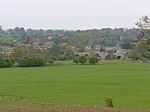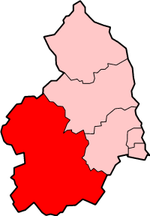Chollerford Bridge
Bridges in NorthumberlandCrossings of the River TyneGrade II listed bridgesGrade II listed buildings in NorthumberlandNorthumberland geography stubs ... and 2 more
Use British English from May 2017Wall, Northumberland

Chollerford Bridge is a stone bridge that replaced an earlier medieval bridge crossing the River North Tyne at Chollerford, Northumberland, England. It is a Grade II listed building. It was built in 1785 by Robert Mylne after the previous bridge had been swept away in the great floods of 1771. Hadrian's Wall crossed the river to Chesters Roman Fort on the multi-arched Chesters Bridge about 700 m (770 yd) to the southwest.
Excerpt from the Wikipedia article Chollerford Bridge (License: CC BY-SA 3.0, Authors, Images).Chollerford Bridge
Military Road,
Geographical coordinates (GPS) Address External links Nearby Places Show on map
Geographical coordinates (GPS)
| Latitude | Longitude |
|---|---|
| N 55.0293 ° | E -2.1273 ° |
Address
Chollerford Bridge
Military Road
NE46 4EW , Humshaugh
England, United Kingdom
Open on Google Maps








